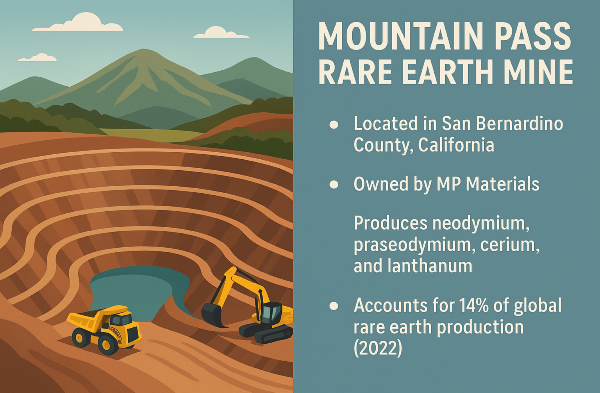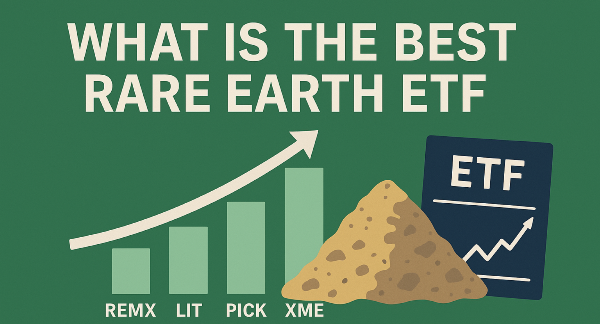Introduction
Dividend income has the potential to be a game-changer for financial stability, offering a reliable stream of passive earnings that can supplement or even replace traditional income sources over time. Whether you're looking to cover small expenses or achieve full financial independence, understanding the different levels of dividend income is essential for setting realistic and achievable goals. The amount of dividend income you generate depends on key factors such as your total investment, the yield of your chosen stocks, and whether you reinvest earnings to accelerate growth. By strategically building a dividend-focused portfolio, investors can create a steady income stream that supports their financial aspirations, whether it's easing monthly expenses or securing long-term wealth.
Level 1: Covering Small Expenses
At Level 1, dividend income can provide a simple yet meaningful financial boost by covering recurring small expenses such as monthly subscriptions, utility bills, or groceries. Investors aiming for this level typically need a portfolio that yields a moderate yet consistent income, often requiring an investment in high-yield dividend stocks or exchange-traded funds (ETFs). A well-diversified portfolio with an average dividend yield of 4% to 6% may generate enough passive income to offset these smaller financial obligations. To reach this stage faster, investors can focus on dividend reinvestment plans (DRIPs) and explore opportunities in sectors known for stable payouts, such as utilities, consumer staples, and real estate investment trusts (REITs).
Level 2: Supplementing Primary Income
Moving to Level 2, dividend income becomes substantial enough to supplement a primary source of earnings, covering significant costs such as rent, mortgage payments, or debt reduction. At this stage, strategic allocation is essential to ensure long-term stability and growth. Investors often transition from chasing high-yield stocks to prioritizing dividend growth stocks, which steadily increase payouts over time. A portfolio balance between dividend aristocrats—stocks that have consistently raised dividends for decades—and high-yield options can help maximize income without sacrificing stability. Additionally, deciding whether to reinvest dividends or cash them out depends on personal financial goals; those seeking faster portfolio growth may continue reinvesting, while others looking for immediate income may begin withdrawing dividends strategically.
Level 3: Financial Independence & Early Retirement (FIRE)
Reaching Level 3: Financial Independence & Early Retirement (FIRE) means generating enough passive dividend income to replace full-time earnings, allowing investors to step away from traditional work while maintaining financial security. Achieving this milestone requires a well-diversified portfolio spread across multiple sectors to minimize risk and ensure steady income. Dividend aristocrats—companies with a proven track record of increasing payouts over decades—often form the backbone of a reliable FIRE strategy. Avoiding yield traps, where stocks offer unsustainable high dividends that lead to future cuts, is crucial for long-term stability. Investors at this level must focus on maintaining sustainable growth, periodically adjusting allocations to strengthen income streams while safeguarding against market downturns.
Level 4: Generational Wealth & Legacy Income
At Level 4: Generational Wealth & Legacy Income, the focus shifts from personal financial freedom to securing lasting wealth for future generations. Investors at this stage build portfolios designed to endure beyond their lifetime, ensuring their heirs benefit from consistent, passive income. Dividend reinvestment strategies become key in compounding wealth, while tax optimization strategies help preserve earnings efficiently. Estate planning plays a crucial role in structuring trusts and investment accounts to maximize longevity and minimize tax burdens on beneficiaries. By incorporating well-managed dividend stocks, ETFs, and carefully structured trust funds, investors can create a financial legacy that supports family members for decades while maintaining the integrity of their long-term financial vision.
Optimizing Your Dividend Strategy
Optimizing your dividend strategy requires carefully selecting assets that align with your income goals and risk tolerance. Investors can choose between individual dividend stocks, ETFs, or REITs, each offering unique advantages. Stocks provide direct ownership and potential dividend growth, ETFs offer diversification with lower volatility, and REITs deliver high-yield income from real estate investments. Another critical decision involves dividend reinvestment plans (DRIPs) vs. cash payouts—reinvesting dividends compounds growth, accelerating portfolio expansion, while cash payouts provide immediate income. Maintaining a strong dividend strategy also requires regular portfolio monitoring and adjustments, ensuring holdings remain aligned with market conditions and long-term financial objectives.
Conclusion
In conclusion, understanding the different levels of dividend income—from covering small expenses to building generational wealth—empowers investors to set realistic financial goals and commit to a sustainable strategy. By making informed choices about portfolio composition, reinvestment tactics, and ongoing adjustments, dividend investing can become a powerful tool for wealth-building and financial independence. Staying disciplined and focused on long-term growth ensures that passive income continues to grow, reinforcing financial security for years to come.
🚀 Your Ultimate Guide to Dividend Investing! 💰
Want to build reliable passive income? Looking to live off dividends? Start here with the top dividend insights:
🏆 Top Dividend Stock Picks
💰 Passive Income & Dividend Investing Strategies
🔍 How Much to Invest for BIG Dividend Income
⚡ Dividend Taxes & Smart Selling Strategies
🔗 Bookmark this guide & start building your dividend wealth today! 🚀💸




























Introduction
Dividend income has the potential to be a game-changer for financial stability, offering a reliable stream of passive earnings that can supplement or even replace traditional income sources over time. Whether you're looking to cover small expenses or achieve full financial independence, understanding the different levels of dividend income is essential for setting realistic and achievable goals. The amount of dividend income you generate depends on key factors such as your total investment, the yield of your chosen stocks, and whether you reinvest earnings to accelerate growth. By strategically building a dividend-focused portfolio, investors can create a steady income stream that supports their financial aspirations, whether it's easing monthly expenses or securing long-term wealth.
Level 1: Covering Small Expenses
At Level 1, dividend income can provide a simple yet meaningful financial boost by covering recurring small expenses such as monthly subscriptions, utility bills, or groceries. Investors aiming for this level typically need a portfolio that yields a moderate yet consistent income, often requiring an investment in high-yield dividend stocks or exchange-traded funds (ETFs). A well-diversified portfolio with an average dividend yield of 4% to 6% may generate enough passive income to offset these smaller financial obligations. To reach this stage faster, investors can focus on dividend reinvestment plans (DRIPs) and explore opportunities in sectors known for stable payouts, such as utilities, consumer staples, and real estate investment trusts (REITs).
Level 2: Supplementing Primary Income
Moving to Level 2, dividend income becomes substantial enough to supplement a primary source of earnings, covering significant costs such as rent, mortgage payments, or debt reduction. At this stage, strategic allocation is essential to ensure long-term stability and growth. Investors often transition from chasing high-yield stocks to prioritizing dividend growth stocks, which steadily increase payouts over time. A portfolio balance between dividend aristocrats—stocks that have consistently raised dividends for decades—and high-yield options can help maximize income without sacrificing stability. Additionally, deciding whether to reinvest dividends or cash them out depends on personal financial goals; those seeking faster portfolio growth may continue reinvesting, while others looking for immediate income may begin withdrawing dividends strategically.
Level 3: Financial Independence & Early Retirement (FIRE)
Reaching Level 3: Financial Independence & Early Retirement (FIRE) means generating enough passive dividend income to replace full-time earnings, allowing investors to step away from traditional work while maintaining financial security. Achieving this milestone requires a well-diversified portfolio spread across multiple sectors to minimize risk and ensure steady income. Dividend aristocrats—companies with a proven track record of increasing payouts over decades—often form the backbone of a reliable FIRE strategy. Avoiding yield traps, where stocks offer unsustainable high dividends that lead to future cuts, is crucial for long-term stability. Investors at this level must focus on maintaining sustainable growth, periodically adjusting allocations to strengthen income streams while safeguarding against market downturns.
Level 4: Generational Wealth & Legacy Income
At Level 4: Generational Wealth & Legacy Income, the focus shifts from personal financial freedom to securing lasting wealth for future generations. Investors at this stage build portfolios designed to endure beyond their lifetime, ensuring their heirs benefit from consistent, passive income. Dividend reinvestment strategies become key in compounding wealth, while tax optimization strategies help preserve earnings efficiently. Estate planning plays a crucial role in structuring trusts and investment accounts to maximize longevity and minimize tax burdens on beneficiaries. By incorporating well-managed dividend stocks, ETFs, and carefully structured trust funds, investors can create a financial legacy that supports family members for decades while maintaining the integrity of their long-term financial vision.
Optimizing Your Dividend Strategy
Optimizing your dividend strategy requires carefully selecting assets that align with your income goals and risk tolerance. Investors can choose between individual dividend stocks, ETFs, or REITs, each offering unique advantages. Stocks provide direct ownership and potential dividend growth, ETFs offer diversification with lower volatility, and REITs deliver high-yield income from real estate investments. Another critical decision involves dividend reinvestment plans (DRIPs) vs. cash payouts—reinvesting dividends compounds growth, accelerating portfolio expansion, while cash payouts provide immediate income. Maintaining a strong dividend strategy also requires regular portfolio monitoring and adjustments, ensuring holdings remain aligned with market conditions and long-term financial objectives.
Conclusion
In conclusion, understanding the different levels of dividend income—from covering small expenses to building generational wealth—empowers investors to set realistic financial goals and commit to a sustainable strategy. By making informed choices about portfolio composition, reinvestment tactics, and ongoing adjustments, dividend investing can become a powerful tool for wealth-building and financial independence. Staying disciplined and focused on long-term growth ensures that passive income continues to grow, reinforcing financial security for years to come.
🚀 Your Ultimate Guide to Dividend Investing! 💰
Want to build reliable passive income? Looking to live off dividends? Start here with the top dividend insights:
🏆 Top Dividend Stock Picks
💰 Passive Income & Dividend Investing Strategies
🔍 How Much to Invest for BIG Dividend Income
⚡ Dividend Taxes & Smart Selling Strategies
🔗 Bookmark this guide & start building your dividend wealth today! 🚀💸